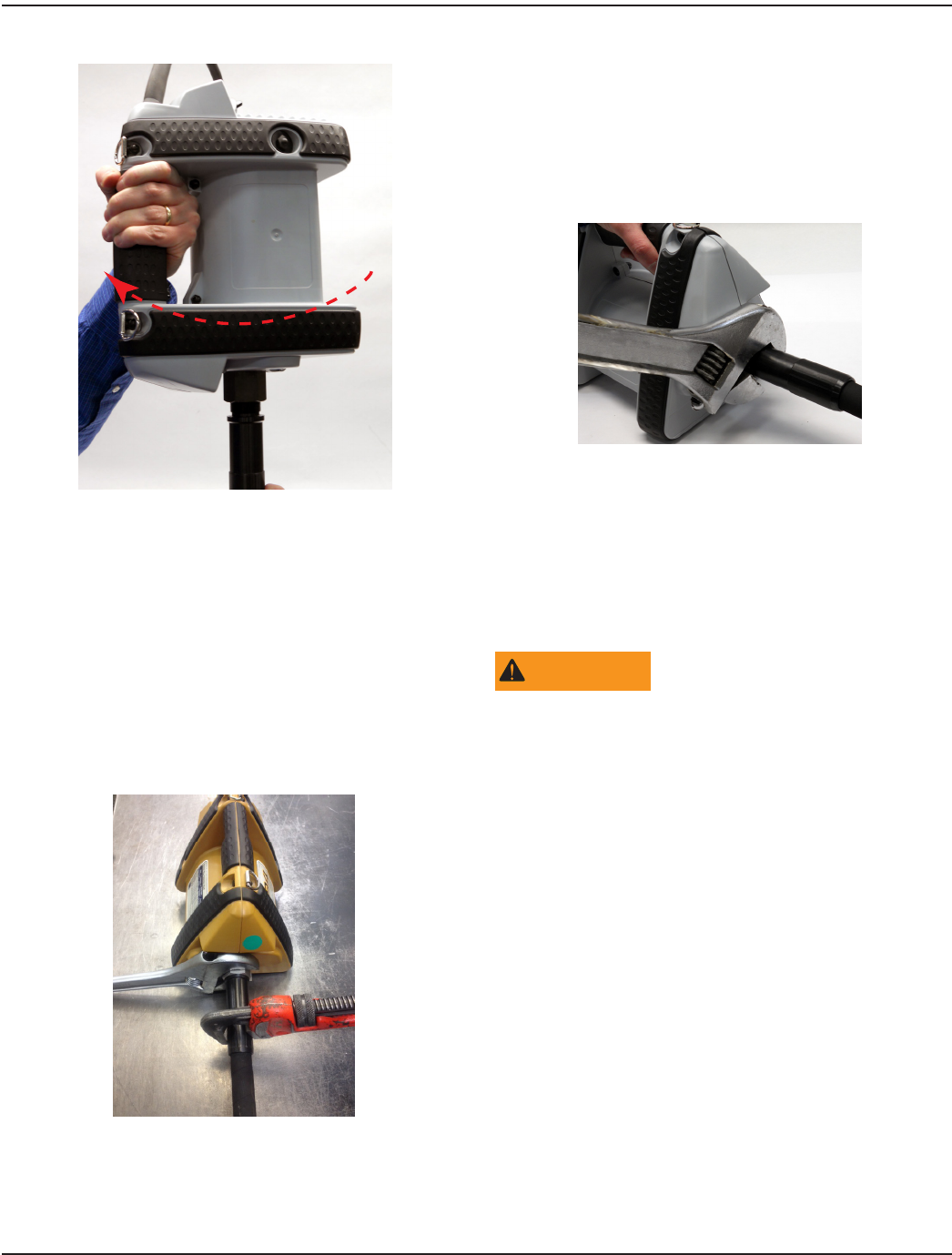Instruction Manual
Table Of Contents
- General Power Tool Safety Warnings
- Safety Symbol Explanations
- Introduction
- Operation
- Setup
- Parts
- Preventive Maintenance
- Electric Vibrator Head Service & Maintenance
- Electric Vibrator Head Assembly Drawings & Parts Lists
- Restrictions of Hazardous Substances (Rohs) Directive
- Waste Electrical and Electronic Equipment (WEEE) Directive

Flex Shaft Concrete Vibrator
Page 10 June 2014
R
o
t
a
t
i
o
n
Figure 10: Motor rotation
OTE:N The motor may be taken off of the work surface
allowing the motor housing to spin in the air while
holding onto the flex shaft with a hand or with vise.
Do not over tighten or reef as this may damage the
plastic motor housing.
4. Once threads are started, rotate motor assembly until the
motor assembly stops turning. See Figure 10.
5. Use a crescent wrench to hold the hex motor connector
and a pipe wrench on the ex shaft to tighten.
See Figure 11.
Figure 11: Crescent wrench and pipe wrench placement
6. The vibrator assembly is now ready to use.
Disconnecting the Vibrator Casing
(Threaded Connector)
1. Carefully loosen the hex motor connector, using a
crescent wrench on the motor and a pipe wrench on
the ex shaft assembly, until the motor assembly can be
rotated by hand in a counterclockwise direction.
See Figure 11.
Figure 12: Hex motor connection
2. Carefully rotate the motor until it and the casing separate
from one another. Do not pull the core end too far out
of the casing end or the head will have to be removed to
realign the core with the head driver.
3. Place casing end of shaft into a vice and place an
adjustable wrench to the hex motor connector to tighten
the motor to shaft.
WARNING
TIGHTENING OR TORQUING USING THE MOTOR HANDLE
CAN CAUSE DAMAGE TO MOTOR CASING.
The motor can accommodate any of the 750 series cores
and casings.
The motor is ordered as either a dedicated quick-disconnect
connection or a dedicated threaded connection version.
If the threaded version was ordered it cannot be used with
the quick-disconnect core and casing. If the quick-disconnect
version was ordered threaded core and casings can be used
with the addition of a thread to quick-disconnect adapter.
The configuration options are shown in Figure 13.










